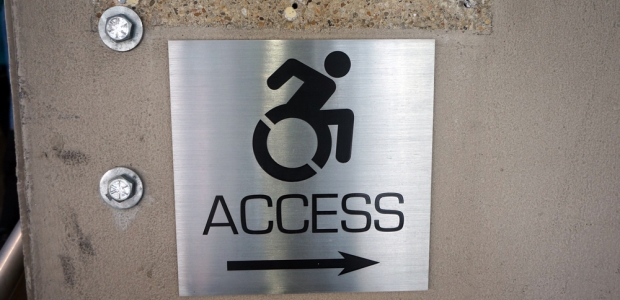
Page 2 of 2
NYC Updates Accessiblity Guidelines
New York City has issued new guidelines that, above and beyond mandatory building codes, will help architects provide more accessible features to the 11.2 percent of city residents who have identified as having a disability, according to Mayor Bill de Blasio. He announced the Second Edition of the Inclusive Design Guidelines, New York City, on July 5; the Mayor's Office for People with Disabilities wrote the first edition in 2010 to help designers produce environments inclusive to all.
The document consolidates design guidelines from multiple sources and expands on the minimal requirements to produce multisensory enhanced environments. "New York City is a place of inclusion where every single person who resides here should be able to navigate daily life without accessibility being a concern," the mayor said. "We are excited to launch this second edition of inclusive design guidelines as a tool to help make our city even more welcoming, convenient, and enjoyable for all New Yorkers."
"The IDG is proving to be an important tool for designers to create welcoming, comfortable, and usable environments," said Victor Calise, commissioner of the Mayor's Office of People with Disabilities. "Locally, the IDG is helping to make New York City the most accessible city in the world."
In partnership with the International Code Council, the IDG is widely available to designers, developers, property owners, and managers. The First Edition has been distributed in many countries, including Italy, Israel, Dubai, and the European Union. "As a world capital, it is important that New York City also be a place that is environmentally easy to navigate for everyone. Not only does it help those with physical and cognitive abilities, it goes toward showing we are one of the most progressive cities in the world. I salute Mayor de Blasio and his administration for making this update publication available. I hope it goes a long way to putting these ideas into place," said City Assemblyman Luis Sepulveda.
City Council Member Jumaane D. Williams, who chairs the Committee on Housing & Buildings, said the IDG "helps New York City remain among the most accessible cities in the world. Thanks to IDG, anyone involved with the development, ownership, and management of physical property will be aware of issues that face New Yorkers who may have accessibility issues. I thank the administration for releasing the second edition, and I look forward to our continued partnership to make sure New York City is accessible for all."
Meanwhile, the International Code Council (ICC) on June 29 released an update to the 2009 ICC A117.1, Accessible and Usable Buildings and Facilities standard that provides greater accessibility to buildings for persons with physical disabilities and incorporates new elements of building design. The 2017 standard is an American National Standard and was developed through a consensus process; it is intended for adoption by government agencies and organizations. "ICC staff worked tirelessly to shepherd the 2017 version of the accessibility standard through the approval process. We're pleased to present this updated standard, which takes into account the latest technology, such as powered wheelchairs and electric vehicles," said ICC Chief Executive Officer Dominic Sims.
ICC said the updated edition of the standard continues to meet or exceed provisions with the Americans with Disabilities Act Accessibility Guidelines and the Fair Housing Design Guidelines, and it includes:
- Enhanced dimensions for clear floor space, turning space, and accessible routes for new buildings and additions
- Provisions incorporating many of the latest public right-of-way criteria for curb cuts, blended transitions, detectable warnings, diagonal parking, and street parking
- New provisions to improve safety for accessible routes through parking lots and to address accessibility at electric vehicle charging stations
- New provisions to facilitate the charging of powered wheelchairs in areas such as accessible hotel rooms and wheelchair seating in assembly spaces
- New provisions for water bottle filling stations and spaces for sign language interpreter stations and video booths
- A new section addressing classroom acoustics to reduce the intrusion of noises from outside the classroom and improve room acoustics
To learn more about the new standard, visit
www.iccsafe.org/icc-asc-a117.